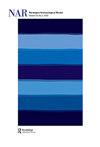考古学和欧洲史前的基因革命
IF 1.1
3区 历史学
0 ARCHAEOLOGY
引用次数: 0
摘要
克里斯蒂安·克里斯蒂安森无疑是欧洲考古学的主要学者之一。任何研究公元前第三和第二个千年的人都已经读过他的一些出版物。他的出版物数量惊人,如果你看看学术界的大量评论,实际上世界上每个考古学家都至少看过一篇他写的文章。克里斯蒂安森很重要,很有影响力,很有意见。他的工作令人钦佩。但正因为如此,我们才有必要仔细研究这个问题。克里斯蒂安森的大量文本生产已经将他过去几年的许多中心主题捆绑在一起,并将它们放在一个总体大纲中。正如他在致谢中所解释的那样,写这本书是“为了迎接第三次科学革命提出的理论和方法上的挑战,以及它对如何研究和解释欧洲史前史的影响”(第89页)。所以,目标是最大的。由于克里斯蒂安森的书是由一系列早期作品或出版作品的摘录组成的,所以没有什么是真正的新东西——说到底,没有人能不断地重塑自己,当然也没有这样的出版成果。但是这本书很好地概述了克里斯蒂安森的世界观和他对过去的看法。很难否认,考古遗传学在史前社会研究中是一个强有力的游戏规则改变者。移民和亲属关系的研究已经上升到一个新的水平。对克里斯蒂安森来说,遗传学——以及其他分子生物学方法——正在引发考古学的一场科学革命。在地质学、植物学和动物学启发下的分类,以及通过14C方法获得绝对时间之后,他把这称为第三次分类,迄今为止,考古学在革命方面一直很差。革命似乎只能从学科之外触发。考古学在同一时期所经历的许多观点和范式的转变,似乎并没有产生同样的影响。人们也可以反思,为什么这门学科似乎不能自我更新。考古遗传学已经取得了突破,但据克里斯蒂安森说,它离稳定实施的阶段还很远。遗传学和考古学之间的差异给跨学科合作带来了巨大的挑战。克里斯蒂安森抱怨对早期出版物的批评是不公正的。关于广泛的人口变化、印欧人及其语言的传播的引人注目的陈述没有包括在研究的实际结果中,他对补充资料中这些陈述是以一种更加深思熟虑和谨慎的方式提出的事实予以安抚。他还驳斥了对基因研究中隐含种族主义倾向的指控。但在这里,克里斯蒂安森把它说得太简单了:科学论述主要是通过科学出版物进行的。研究人员有责任在这里进行清晰的论证。如果补充资料不能以理想的清晰度传达研究结果,则应在正文中表述研究结果。如果琼斯和Bösl(2021)的观点是正确的,即遗传学是由对关注、名声和影响力的追求驱动的,那么我们应该非常认真地对待这一点。在对种族主义的指责方面,克里斯蒂安森的讨论也不够复杂。没有人指责遗传学家有至上主义的态度。他引用的文献在这里很微妙。在右翼团体的仇外和种族主义言论中,遗传祖先的概念找到了肥沃的土壤。这在一定程度上要归咎于基因,因为它们为有问题的身份打开了大门本文章由计算机程序翻译,如有差异,请以英文原文为准。
Archaeology and the Genetic Revolution in European Prehistory
Kristian Kristiansen is certainly one of the leading scholars in European archaeology. Anyone who studies the third and second millennium BCE will already have read some of his publications. His publication list is breath-taking, and if you look at the immense number of total views on Academia, actually every archaeologist in the world must have already looked at least one article by him. Kristiansen is important, influential and opinionforming. His work can only be admired. But that is precisely why it is important to look closely here. Kristiansen’s textual mass production has churned out a book that bundles many of his central themes of the last few years and puts them into an overall outline. As he explains in his acknowledgements, the text was written ‘to meet the theoretical and methodological challenge raised by the third science revolution and its implications for how to study and interpret European prehistory’ (p. 89). So, the objective is maximally large. Since Kristiansen’s book consists of a series of outtakes from earlier works or works in print, nothing is really new – in the end, no one can constantly reinvent himor herself, certainly not with such a publishing output. But the book provides a good overview of Kristiansen’s worldview and his approach to the past. It is hard to deny that archaeogenetics is a powerful game changer in the study of prehistoric societies. Migration and kinship studies have been taken to a new level. For Kristiansen, genetics – and with it other molecular biological approaches – is triggering a scientific revolution in archaeology. Since he calls this the third, after the classification inspired by geology, botany and zoology and the access to absolute time made possible by the 14C method, archaeology has thus far been poor in revolutions. And revolutions seem to be triggered only from outside the discipline. The many shifts in perspective and paradigms that archaeology has undergone in the same period do not seem to have had an equal influence. One could also reflect on why the discipline cannot seem to renew itself on its own. Archaeogenetics has already experienced its breakthrough, but according to Kristiansen it is still far from the phase of steady implementation. The differences between genetics and archaeology pose great challenges for interdisciplinary cooperation. Kristiansen complains about the criticism of earlier publications as unjustified. The criticised striking statements about extensive population changes, the spread of the Indo-Europeans and their language, which are not covered by the actual results of the study, he appeases with the fact that in the Supplementary Information these statements were formulated in a much more deliberate, cautious way. He also rejects accusations of implicit racist tendencies in genetic research. But here Kristiansen makes it too simple: discourse in science is primarily conducted via scientific publications. It is the duty of researchers to argue cleanly here. If the Supplementary Information does not convey the results of the study in the desirable clarity, then the results of the study should be formulated as such in the main text. If Jones and Bösl (2021) are right that genetics is driven by the quest for attention, celebrity and impact, then this should be taken very seriously. And Kristiansen’s discussion is also under-complex with regard to the accusations of racism. No one accuses geneticists of supremacist attitudes. The literature he cites is quite nuanced here. In xenophobic and racist discourses of right-wing groups, the concept of genetic ancestry has found fertile ground. It is genetics who are partly to blame for this since they open the door to problematic identity
求助全文
通过发布文献求助,成功后即可免费获取论文全文。
去求助
来源期刊

Norwegian Archaeological Review
ARCHAEOLOGY-
CiteScore
2.10
自引率
0.00%
发文量
13
期刊介绍:
Norwegian Archaeological Review published since 1968, aims to be an interface between archaeological research in the Nordic countries and global archaeological trends, a meeting ground for current discussion of theoretical and methodical problems on an international scientific level. The main focus is on the European area, but discussions based upon results from other parts of the world are also welcomed. The comments of specialists, along with the author"s reply, are given as an addendum to selected articles. The Journal is also receptive to uninvited opinions and comments on a wider scope of archaeological themes, e.g. articles in Norwegian Archaeological Review or other journals, monographies, conferences.
 求助内容:
求助内容: 应助结果提醒方式:
应助结果提醒方式:


